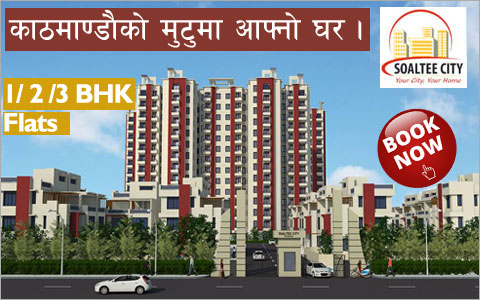National News
The government has started keeping records of its possessions, particularly land and buildings.
Although it is yet to prepare an inventory of its properties at all the offices across the country, it has compiled details of the land and buildings owned by 40 percent of its offices as of the last fiscal year.
According to a report prepared by the Financial Comptroller General Office (FCGO), these 1,758 government offices own 996,937 ropanis of land (49,319,189 sq m), 1,404 concrete buildings and 4,867 non-concrete buildings.
The report does not include properties likes forests, roads and open land existing outside its office premises. Land plots, buildings and farms have been included.
According to the report, government offices in Kanchanpur, Rupandehi and Makwanpur have the largest landholdings.
The government owns 14,347 ropanis of land in Kanchanpur, 12,368 ropanis in Rupandehi and 8,666 ropanis in Makwanpur.
As far as buildings are concerned, Makwanpur has the highest number of government buildings at 470, followed by Chitwan with 380, Banke with 291 and Rupandehi with 274.
According to Ram Sharan Pudashaini, spokesperson of the Finance Ministry, the government decided to collect data about its properties as lack of details had led to their being misused.
Pudashaini said that some of the properties were not registered in the government’s name, and that a lot of its land was being encroached upon by squatters and other people.
“Keeping updated records is not only necessary for preventing their misuse but also for properly utilizing them,” he said.
In order to properly manage the government’s properties, it has initiated discussions on establishing a separate office.
A Finance Ministry official said that such an office would better use its property by selling or leasing it to generate additional income.
Baikuntha Aryal, chief of the budget division at the Finance Ministry, said that the issue of establishing a separate office was currently at the discussion phase, and that no concrete decision had so far been taken.
source: the kathmandu post,17 march 2014
- 9th Nepal Buildcon International Expo 2024
- Real Estate Expo 2023
- NRB raises housing loan limit to encourage home constructions
- Nepal Rastra Bank (NRB) Monetary Policy 2080-2081
- New Price of Land in Kathmandu Metropolitan City, Nepal
- Capital Gains Tax Rate on Real Estate Transactions in Nepal 2080-81 ( 2023/24 )
- Kathmandu metropolis implements free parking policy for commercial buildings and hospitals

![[X]](https://www.housingnepal.com/images/popup-close-button.png)







































































































































































































































































































































































































































 Facebook
Facebook
 Delicious
Delicious
 Digg
Digg
 Reddit
Reddit
 Stumble Upon
Stumble Upon









